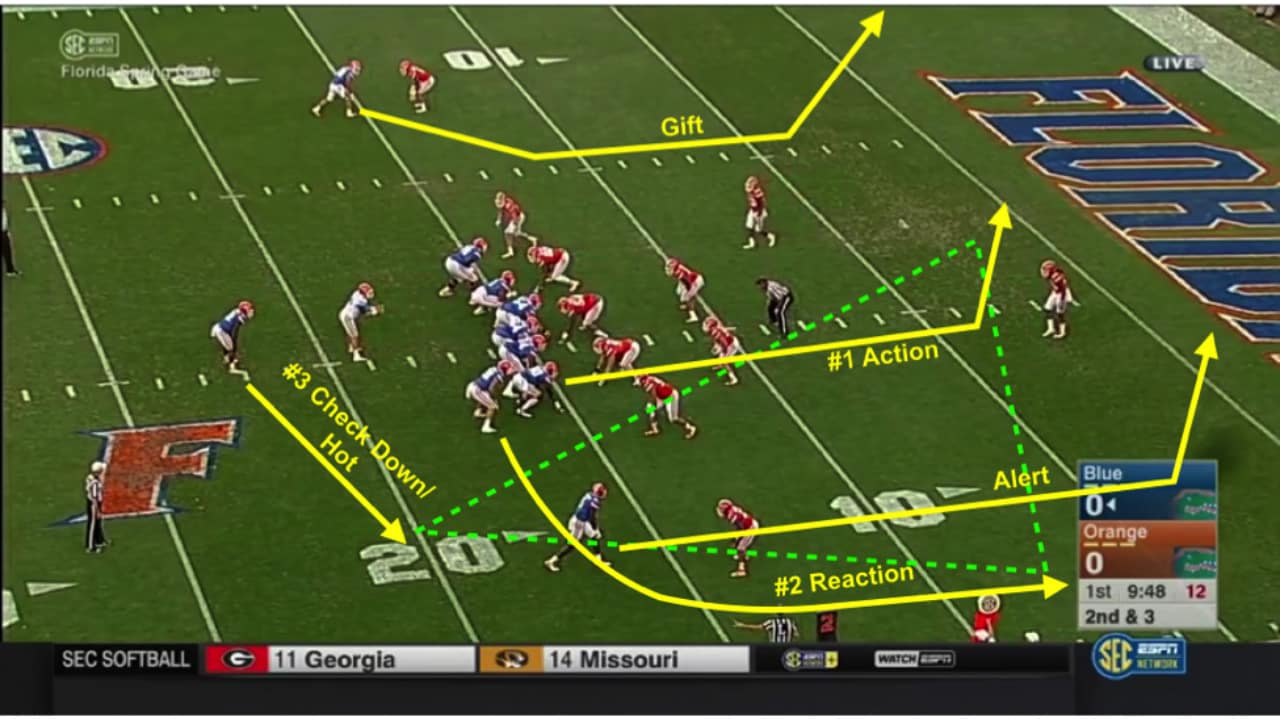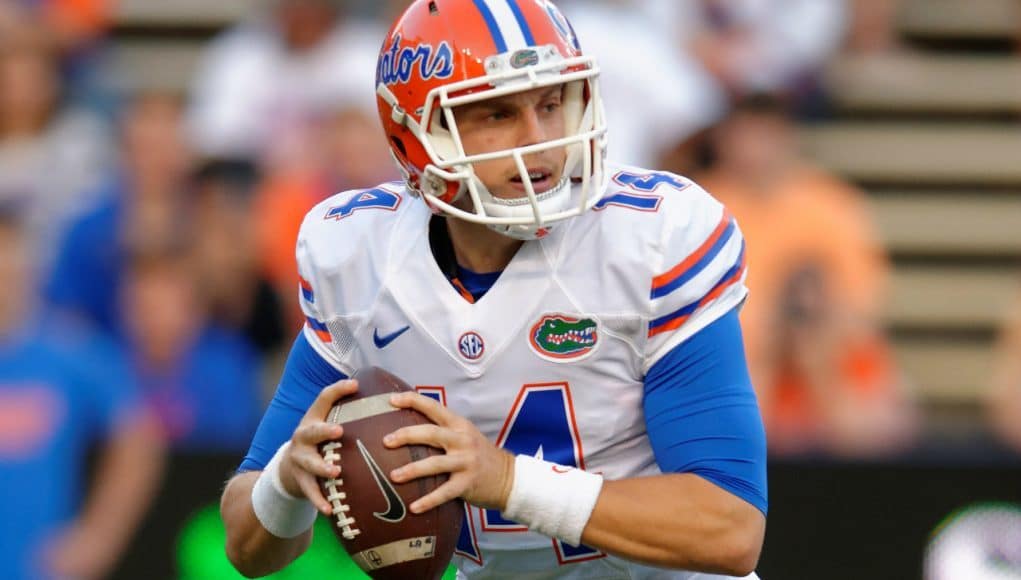Single Concept Progressions
When Florida Gators head coach Jim McElwain named Luke Del Rio his starting quarterback last week, about the only surprise was that the announcement took as long as it did. Del Rio’s 10 completions on 11 attempts in the spring game for 176 yards for an unreal 16 yards per attempt was perhaps the most efficient performance in a spring game in recent memory. When he was in the game, his blue team moved up and down the field efficiently and methodically, finding the end zone through the air twice
Why is Luke Del Rio such a great fit for Jim McElwain’s system? It really boils down to 4 things: smart game management skills (i.e. knowing when to concede the play), an ability to understand the play concept, recognition of what the defense is giving him, and the anticipation to get the ball out to his receiver on time and with plus accuracy, an area that was sorely lacking the last half of 2015. In Del Rio, Mac really has all he needs in a quarterback to make his offense go. Mac’s offense is designed to give a quarterback with these skills multiple answers through the layering and combination of simple, proven concepts out of multiple formations and personnel groupings. He combines this with motion to force the defense to tip their hand and reveal to the quarterback what the coverage shell is before the bodies start flying around and the pressure gets cranked to 11.
In doing this, he’s able to reduce many of these layered concepts with 5 receivers in the pattern to a single post-snap read based on a key with an outlet. There are a couple of ways Coach Mac does this, but this week we’ll primarily be exploring what he refers to as ‘single concept’ plays. The way this works in these bread and butter ‘single concept’ pass patterns is with a sequence of thought processing that reduces 5 possible targets to a 3-step post-snap progression. The sequence goes like this:
Alert, hot, gift, action, reaction, check down. While it sounds complicated, the key is that the Alert and Gift are pre-snap reads and hot is only triggers if an extra linebacker rushes

With the Alert, the quarterback starts by determining if there will be an alert call or not. The receiver with the designated alert call is a home run shot, determined if the defense is giving the quarterback a certain look. If there is no alert call, the quarterback ignores this receiver post-snap.
Along with the alert goes the Hot call. In Mac’s offense, there is either a hot route built into the pattern, or the first detached receiver to the side of the running back will be hot with a sight adjustment in the event the defense rushes two linebackers to that side. Which option is used depends on whether it is 5- or 6-man protection. This determination is generally made pre-snap or immediately post-snap and is drilled into the quarterbacks full-contact from their first practice.
The next step in the sequence is the Gift. This is another pre-snap recognition for the quarterback where he is looking for an easy throw the defense is giving him. If he doesn’t take it, he’s wrong. An example would be those quick stand passes against soft cover 3 that you’ll see every now and then where the receiver can pick up an easy 5 yards.
With the pre-snap reads and hot determination out of the way with lower pressure and no defense bearing down, the quarterback can then hike the ball and move on to post-snap decision making keyed by his drop. If his #1 Action receiver isn’t about to come open by the end of his drop, he’ll hitch up and look to his #2 Reaction receiver in rhythm. If his Reaction receiver is also covered, he’ll then hitch up again and move to his #3 Check Down outlet.
While it sounds complicated on paper, in practice it keeps the decision making pretty simple and often no more than binary based on what a single zone defender does. Take a look at how the combination of Luke Del Rio and Mac’s scheme come together in the play below from the Orange and Blue game.
When it comes to teaching quarterbacks, Coach Mac makes it about as easy as it gets so his guys can just play without having to think too much after the ball is snapped. It’s one reason he has been able to turn guys like John Parker Wilson, Greg McElroy, and A.J. McCarron into very successful quarterbacks despite less than ideal measurable. At the end of the day, they trusted the system and let it give them answers, just like it will do for Luke Del Rio this season.



Looks like he missed the action.
Looks like it at first glance, but watch the hips of the high safety. When they turn towards Lewis running the Action, that essentially keys the move to the reaction throw by LDR. Lewis just looks open because the high safety froze and had to turn around and backtrack to try to get to the ball when it was thrown.
Great Article!
Suggestion, use only 1 photo on the slider for the article. When you have more than one and they are different sizes each time the photo changes the page jumps while you are reading and it’s a challenge to stay engaged. Very informative post though. Thanks for your contribution.